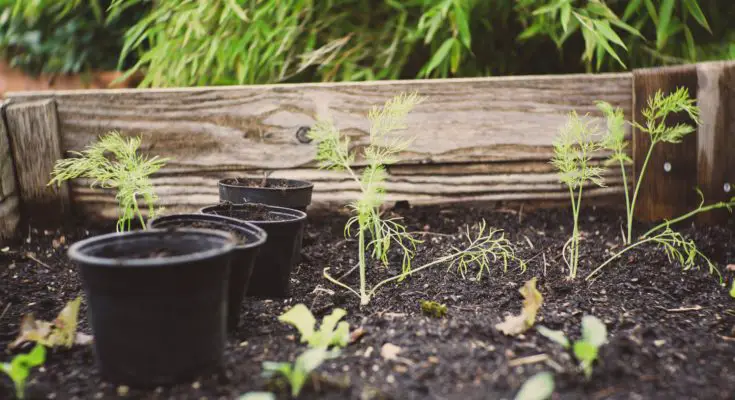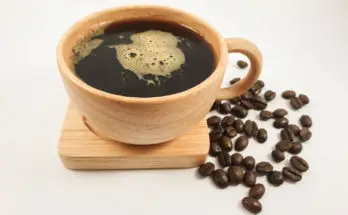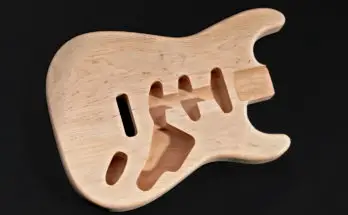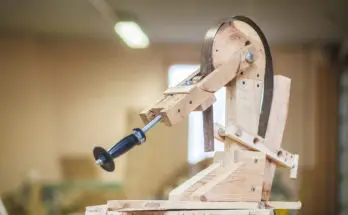When it comes to gardening, raised beds, whether for vegetables, fruits or flowers, are gaining in popularity. There are several advantages to raised bed gardening and a multitude of material choices to consider when constructing a raised bed.
In order to maximize the benefits of raised bed gardening making the best choice for your container is essential. Cedar wood is the premier choice for raised bed gardening. Not only is cedar naturally rot and pest resistant, but it outlasts most other lumber options.
Cedar – A Protected Wood
Due to the naturally occurring resins, or extractive in cedar varieties, the wood is protected against the elements: weather, soil exposure and pests that could potentially cause issues. This is a rather important quality considering most people who build raised beds want to use them for many seasons.
Treated wood, predating 2003 is not recommended for raised bed gardening due to the risk of chemicals being leached into the soil. In 2003 wood treated with CCA, or chromatid copper arsenate was banned in the United States. Any wood harvested before 2003 could have been sprayed with CCA and might not be a safe choice for your raised bed.
 Cedar’s longevity is another quality making this wood an excellent choice. When used in gardening beds it has been known to last anywhere from ten to twenty years, depending on the exposure to the elements it encounters. Because of it’s natural durability and rot and pest resistance treating the wood before using is considered widely unnecessary.
Cedar’s longevity is another quality making this wood an excellent choice. When used in gardening beds it has been known to last anywhere from ten to twenty years, depending on the exposure to the elements it encounters. Because of it’s natural durability and rot and pest resistance treating the wood before using is considered widely unnecessary.
As is the case with any natural product, the longevity of the wood is dependent upon the climate and conditions in which it is being used.
In addition, cedar is a hard wood that doesn’t bend or become misshapen, thus making it easier to work with. Cedar has incredible strength and because of that it is less likely to bow when pressure is applied from the soil or weight of the garden itself.
There is no pre-drilling required and it does not split easily. You may find knots in the wood, but there is no structural downside to having those in the lumber and they often make interesting accents in the finished beds.
For those concerned with making an environmental choice, cedar wood meets all the marks. Wood is a renewable resource and cedar is biodegradable, therefore it does not require any special process to be disposed of. With cedar, the entire tree is utilized once harvested, another bonus to choosing this wood as your raised bed material of choice.
Choosing a FSC, Forest Stewardship Council, certified wood goes one step further in sustainability. Certified FSC wood has been sourced from a responsibly managed forest and therefore provides economical, environmental and social benefits throughout the process of harvesting.
One last, but possibly not as important characteristic, regarding cedar is its natural beauty. The hue variation between each piece of cedar could be dramatic. These rich colors provide an aesthetic to your garden that should not be overlooked.
Cedar Drawbacks
Now to address the overarching, and possibly only negative to having cedar wood frame your raised bed garden, is it could be cost prohibitive. While most cedar is commercially farmed and widely available at lumber stores, it is quite expensive.
Thus, the choice becomes whether to use a wood for construction that scores high in longevity, or a less costly option that may not endure the elements as well or for as long. Purchasing rough lumber does assist with the purchase price and is an acceptable option for cedar.
If cedar wood is your first choice for your raised bed, there are several varieties to choose from. For instance, if you are an East coast resident, Eastern red cedar may be worth considering. It is sustainably and locally farmed, making it easier to procure. Once again though, it can be quite costly. Western red cedar is the most widely used and readily available, making it a top choice.
Additional Options
Outside of cedar there are several other varieties of wood that rank high for raised garden beds. Among those are Eastern Hemlock, Douglas Fir, Redwood, Walnut, Pine and Spruce. The softer woods listed here, pine and cypress specifically, will require more frequent replacement, as they are susceptible to the elements, such as fungi, pests and water damage. Should you find yourself in the position of needing alternative options to wood, do not despair.
There are several other types of material to consider. Among some of the best alternatives are composite wood and recycled plastic beds.
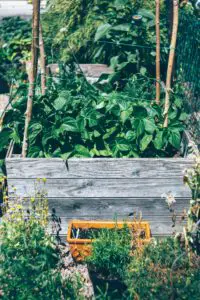
Composite wood is a blend of wood fiber and protected, recycled polypropylene. It has a wood grain texture that lends itself to a natural look in your garden. Other notable qualities of this material include it’s easy assembly, mostly due to the lightweight nature of the material, it is weather and rot resistant and can be reconfigured or expanded based upon the needs of your garden.
In considering composite wood it is helpful to be aware that there could be bowing of the beams, and the lightweight construction that allows it to be so transportable and flexible can also cause unwanted issues as well.
Recycled plastic beds are typically made of recycled milk jugs, thus creating a high density polyethylene plastic. It is non leaching, meaning that any chemicals that the material may be comprised of will not leak into the soil and/or what is being grown in your raised bed. They are also extremely durable. Count this option as long lasting, up to fifty years.
These plastic beds are smooth, washable and retain their color through the elements. Although heavy, they are not as strong as wood and they could require additional bracing to prevent bowing of the beams. Keep in mind that recycled plastic garden beds while a sustainable and long lasting option, can be an expensive investment upfront.
Options to Avoid
A note of caution as you venture into the rewarding adventure that is raised bed gardening. There are a few materials that should be avoided as wood alternatives.
Cinder blocks contain heavy metals and those could leach into the soil and therefore the plants being grown. Clearly avoid those blocks made with heavy ash, but concrete blocks are considered a relatively safe choice. Most concrete blocks in the market today are free from heavy ash.
Tires are a controversial alternative as well. While there is a great need for recycling them in an environmentally friendly manner, there are varied thoughts regarding their safety in gardening. The concern is due to the lack of research as to whether their toxins affect the soil with which they are filled with.
Steel of any shape or construct is a questionable option. There hasn’t been a definitive determination if the chemical properties of this metal are excreted and leached into the soil.
A galvanized tub or tank might be the better and safer bet, although there could be rust issues as they age and weather the elements. The tanks can be costly as well.
Suffice to say there are a plethora of choice materials for building your raised gardening bed, each with pros and cons to consider when making that decision. Some are personal preference and others deal directly with safety and ethics.
Topping the list and ticking most high priority boxes is cedar wood. From it’s natural beauty, sustainability and longevity, cedar wood is a top notch choice.

